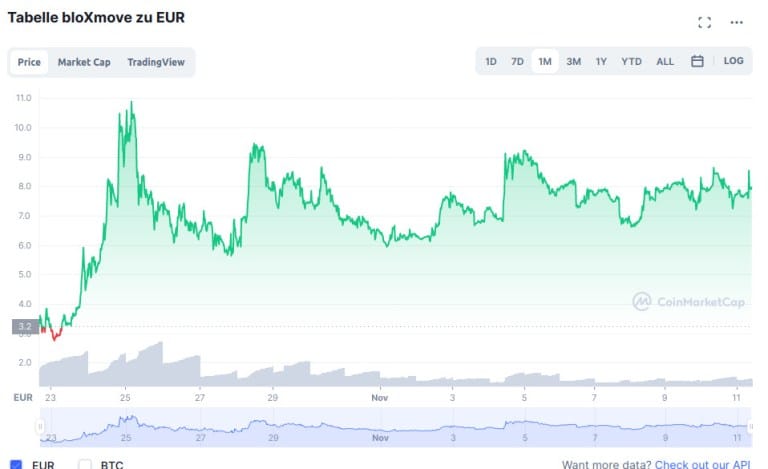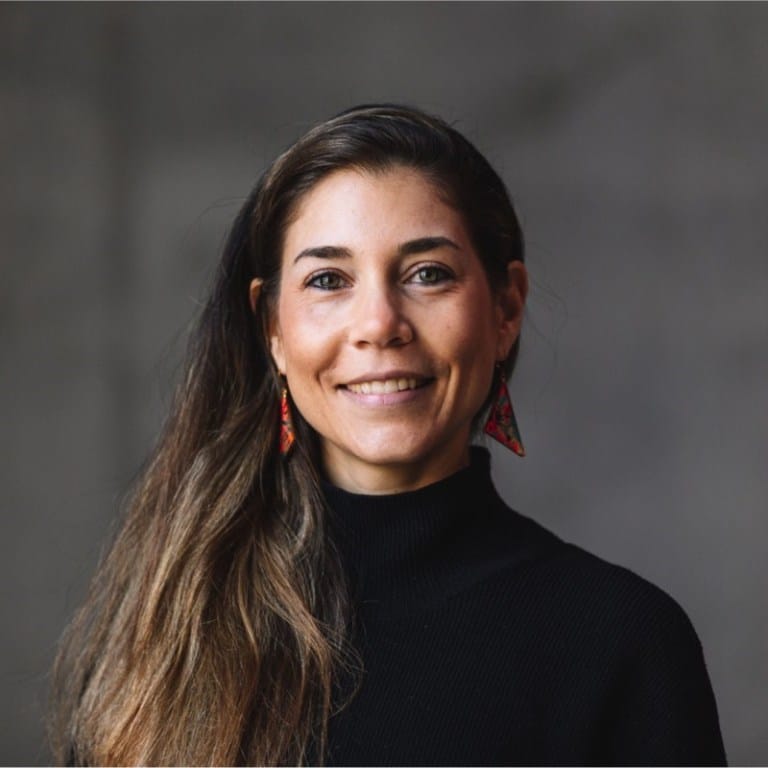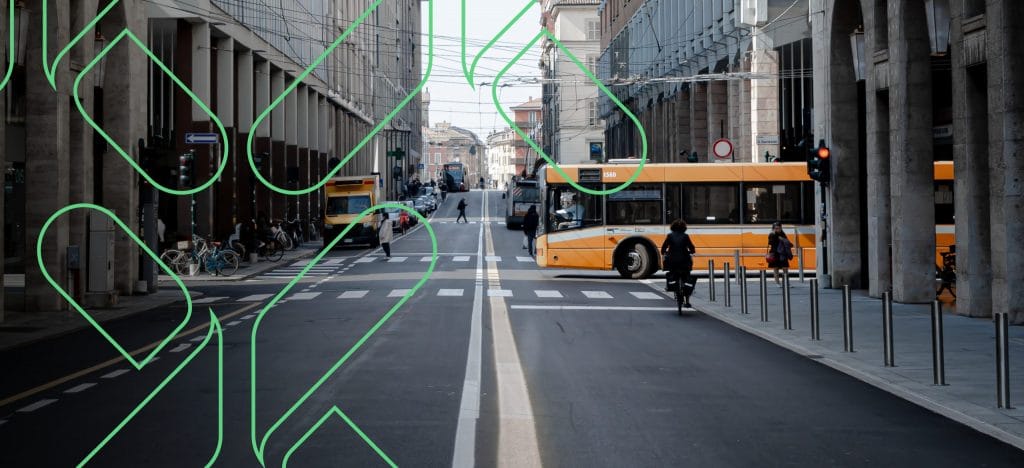The Stuttgart-based startup bloXmove wants to rediscover mobility with the help of a blockchain. Through the “BLXM Initial Dex Offering” (IDO), it demonstrates how startups can take a kind of “IPO” these days. We talked to the founder about the project, about IDOs and about Daimler. Because that’s where it all began …
Sometimes wonderful things come about because they are nowendig. Sophia Rödiger from Berlin knows this from her own experience. She actually studied business psychology and then started working at Daimler Mobility, where she helped set up an innovation and start-up incubator.
Today, she no longer works at Daimler. Today, she is proud to lead the startup bloXmove with her two co-founders Harry Behrens (CTO) and Bernd Hanisch (CFO) and to realise their vision of decentralised mobility. They recently achieved a milestone here: a successful Initial Dex Offering (IDO) of the BLXM token, for which bloXmove did the engineering and marketing. The tokens are officially issued and managed by the Singapore-registered BLXM Token Foundry (Foundation).

Price history of the BLXM token according to Coinmarketcap.com
On 22 October, the IDO opened on the two decentralised exchange platforms Uniswap and PancakeSwap with an initial price of 69 cents. The price rose quickly and rapidly, reaching a peak of 11 euros on 25 October. It then fell back to slightly below 6 euros, but now stands at just over 8 euros. BLXM Token has reached a market capitalisation of just under US$8 million and is listed on Coinmarketcap and Coingecko.
The IDO was obviously a resounding success. So is the story of how it came about.
Traditionally conservative, but innovative
The roots of the start-up bloXmove lie with a traditional company: the Stuttgart car manufacturer Daimler. It was there that the three founders met, were able to build up expertise and a network, and it was there that the bloXmove Mobility Blockchain Platform was born, at that time in the context of the Daimler Mobility Blockchain Factory

Sophia Rödiger. All image rights by Sophia Rödiger.
Sophia is aware that Daimler and start-ups don’t sound like a memory pair at first. Here, a sedate, traditional corporation whose history began 135 years ago, and which moves solidly and persistently like a diesel sedan within the framework of its structures. There, on the other hand, the world of start-ups – in which long dry spells can already mean the end of the journey, because standing still often means that someone else will grab the new market. How can that go together?
“At Daimler, a rethink has taken place in recent years,” Sophia explains, “and the company has realised how important service and software are, and that it cannot do everything on its own, cannot integrate every competence into its structures. Rather, synergies should be used: Start-ups are innovative, fast and highly specialised, and Daimler has customers, money and business know-how. If you bring both together, and leave each party to its strengths, something great and new can emerge. “
“A decentralised platform for mobility services “
In her leading role in Daimler Mobility’s startup scouting, Sophia then also met Harry Behrens, “my IT counterpart and visionary in AI and decentralisation”, as she puts it. Together with the right startups, they spent over three years developing the Blockchain Mobility Platform.
The goal is big: “a software infrastructure for an open decentralised network of mobility”. It should connect all mobility providers, from scooters you can rent in cities to car sharing, rental bikes, train tickets, bus rides and so on. In other words, every kind of mobility that happens away from one’s own means of transport. True to the motto of innovation: “Make yourself superfluous – otherwise someone else will do it. “
The decision to raise it decentralised on blockchain resulted from observing the market and the implementation difficulties of others. “If you do it centrally, like the typical aggregation apps, you become the main interface to the customer. That weakens the providers who have the fleet. They lose the customer interface, which is now owned by the aggregator, who gets paid dearly for the promise of more trips. For many mobility providers, this dependency doesn’t pay off.”
But what if you don’t take away the autonomy of the providers? If they remain independent and keep their customer interface, but can still cooperate? That was exactly the idea. “We are not building an end-user platform,” Sophia explains, “our direct customers are companies: Scooter companies, bus and train, transport associations and municipal utilities. We don’t distribute a new app in the app store, but build a shared software infrastructure for these companies together. We are invisible to the end user, yet we make their whole experience of mobility easier, faster and smoother.”
Access, and this is the crux of the vision of the three bloXmove founders, should happen as before via the companies’ existing apps. The Flixbus app could thus offer car sharing or scooter services as well and vice versa. “The companies can decide for themselves whether and with which partners of the network they want to do business and cooperate together. If both sides agree, this is secured via a digital contract, and the necessary transactions are processed in encrypted form via the Mobility Blockchain platform. “
A decentralised vision needs independence
But then a lot changed. About 1.5 years ago, former Daimler boss Dieter Zetsche stepped down and was succeeded as CEO by Ola Källenius. This meant that the company was about to undergo another cultural change. The focus was to be more on car building and manufacturing again.
7/ $BLXM
Launched independently as @bloxmove in May 2021 though Europe’s most elite blockchain accelerator @OvioHQ to drive growth and transformation and raised more than $3 million as seed investment including @BlockwallCap, @master_ventures & @OutlierVentures pic. twitter.com/VLRIhYTAEI
– Crypt Stylo (@crypt_stylo) November 10, 2021
At the beginning of this year, an important decision was made for Sophia’s project: the existing technology was to be further advanced foran outside the Daimler Group. The reasons for this decision were complementary: on the one hand, Daimler was refocusing its corporate strategy. On the other hand, it had been clear from the beginning that an open, decentralised mobility infrastructure can only work if it is set up and operated by an independent, neutral partner. Positive feedback from external experts and investors proved this assumption. This led to the successful handover of the licence to the newly founded startup bloXmove in May 2021.
From app to app
The platform was brought to maturity over three years, and the first partnerships are already in place. For example, with a scooter company in Europe. “If your transport provider in Ulm,” Sophia explains, “cooperates with them, for example, you can book a scooter abroad through them without having to register there as a new customer in advance. Service roaming becomes possible.”
The founder explains that she sees herself as a “meta-transaction network. We do not replace the databases and accounting systems of the partner companies. Think of our technology layer as a Saturn ring that circles around the companies and connects them by routing mobility-related transactions on our blockchain layer.”
Not every booking becomes a transaction on the bloXmove blockchain. When the Ulm-based transport provider sells a ticket in its area, nothing happens on bloXmove, likewise when someone books a scooter with the Felyx app. A blockchain transaction is only fired when one app books a mobility service with another provider.
These transactions are written in digital contracts and store, in encrypted form, details of the booking so that only the parties involved can use them. Internal settlement units and the BLXM token are used to settle the expenses that arise between the mobility providers. This should also make so-called micro payments possible, which are common in the context of urban mobility and have often been a headache for the accounting departments of large companies up to now.
The Initial Dex Offering (IDO)
As befits a blockchain startup, bloXmove is also breaking new ground in fundraising. The startup decided to accompany the BLXM Token Foundry in its token launch. Of course, the foundation and the startup are connected, and the foundation’s work is meant to help the blockchain project. But formal independence is important – after all, the blockchain is not a company – and has proven itself in the industry.
It should not be an ICO (Initial Coin Offering), no Security Token Offering (STO), no IEO (Initial Exchange Offering) – but an IDO: “Initial DEX Offering”. DEX means a decentralised exchange, whereby the English word “exchange” cannot be translated 1:1 into German. In any case, you can exchange tokens decentrally on a DEX. This kept the token offering independent of specific third parties.
The BLXM tokens are offered on two decentralised exchanges on two blockchains: Uniswap on Ethereum (ETH) and PancakeSwap on the Binance Smart Chain (BSC). A few days after the launch, the bridge was already in place to move BLXM between ETH and BSC. If smart contract is going to happen, it’s going to happen right.
“It’s fascinating. We reach so many more potential partners – through a global community. Everyone knows someone who knows someone else who works at a mobility company.” It also shows how valuable independence can be. “Of course, this would have been a bit more complicated at Daimler,” Sophia laughs, “but this way it’s profitable for both: we can exploit the potential of blockchain technology and Daimler can use our mature technology in their projects.
BLXM is a “utility token”; in regulatory terms, it was helpful that the bloXmove token is not a security token, which is more like a share investment in a company and is therefore also subject to completely different regulatory standards. In the BLXM case, the token has a specific “use”.
But what precise use do BLXM tokens have?
The BLXM token is used to pay for mobility services and settle transaction costs incurred through the bloXmove Mobility Blockchain Platform. “At the beginning, a burning mechanism is applied,” Sophia explains, “so the number of BLXM tokens decreases.”
“After a certain reduced number, other stable coins will then be allowed,” she continues, “and we take over the fees in BLXM. Anyone who owns a BLXM Token becomes a community member and invests his or her faith in our vision of multi-modal, decentralised mobility. “
Some understand pic.twitter.com/CDR1Ur8nKx
– CryptoCheckmate (@CryptoCheckmat1) November 7, 2021
More ideas for the tokens are in the pipeline: for example, in the future they can also be used as a kind of “rewarding” to reward the use of green energies and alternative mobility. Excitingly, some political entities are already thinking about exactly such innovations.
In early October 2022, bloXmove is expected to go live with the first partners. “Then you can use BLMX to process financial transactions in real time, even if many parties are involved. “
The technology is not so important
But can the blockchain do that? And anyway – what kind of blockchain is bloXmove, or should it become?
“We are a layer 2 blockchain based on the ‘main net’ Ethereum, but we are also in talks with other chains because of the high fees,” Sophia explains, “because especially in the very sensitive micro-pricing area of urban mobility, every cost item matters.”
Unfortunately, some technical details remain vague in both the interview and the whitepaper. Is it a rollup or a sidechain or a completely different L2 solution? Does the startup use existing platforms, such as Optimism, Arbitum or Polygon?
Sophia explains, “We are our own layer 2 ledger – not one we use from anyone else, but we use the layer one mechanism of ETH and for secure finance the corda r3 chain, we are not a sidechain.” It could be thought of as “like an overlay, written in smart contracts that are defined as protocol endpoints and adhere to ETH logic.”
Of course, that answers the questions rather unsatisfactorily. But maybe that’s not so much the point. Because as long as the technology is good enough to work, something else will be much more decisive: whether the startup bloXmove succeeds in impressing the numerous mobility providers with its concept, bringing them to the table and jointly demonstrating the added value of a large mobility alliance. We can be curious.
